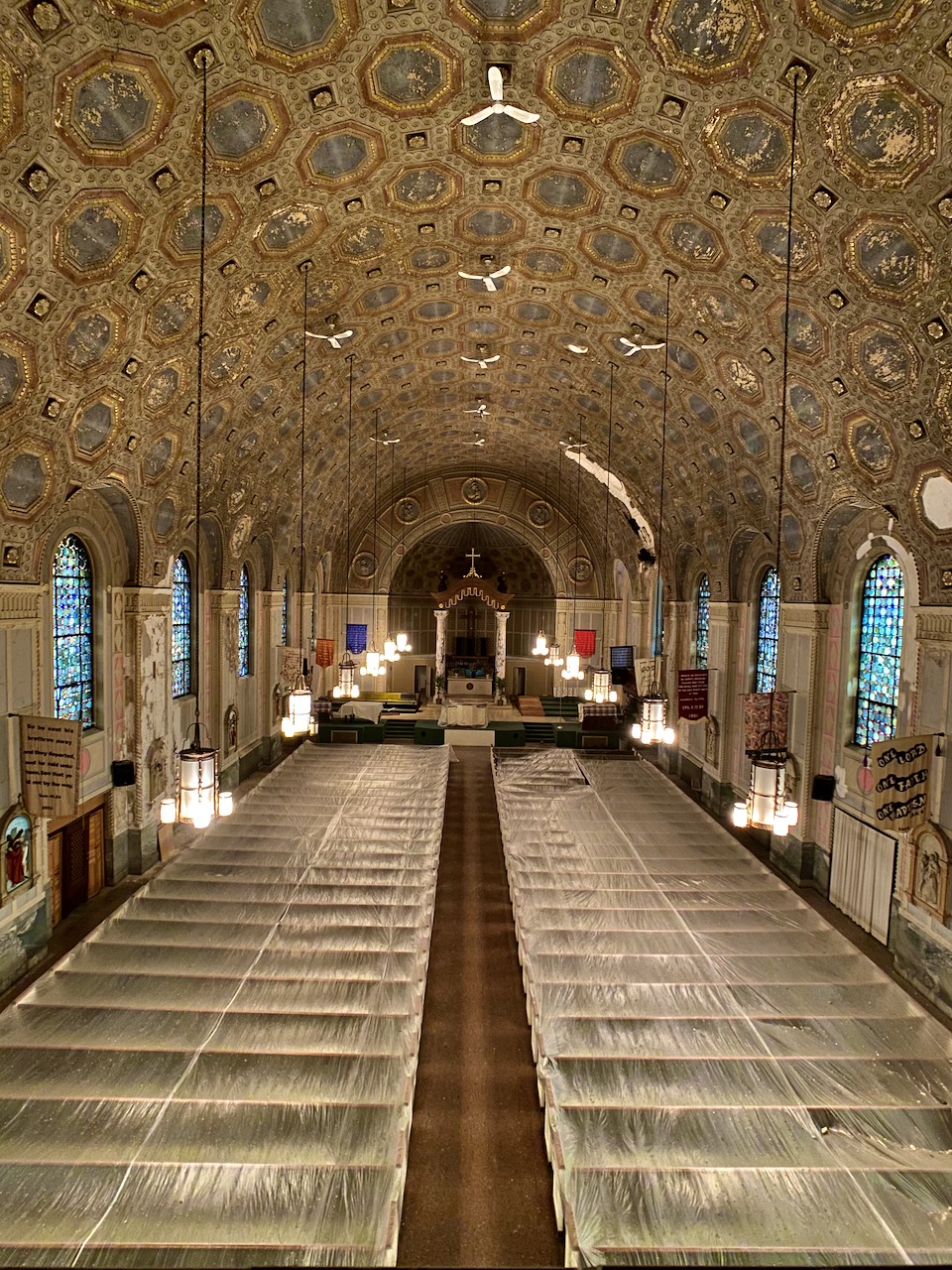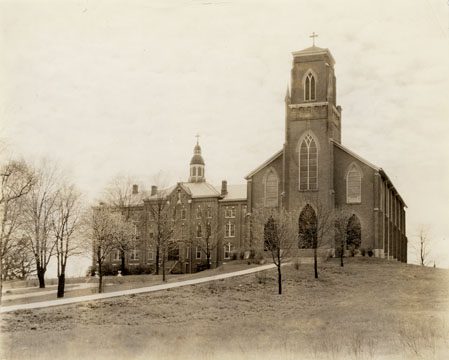Discover Family-Oriented Logan Ohio Churches for Faith Services and Social Events
Discover Family-Oriented Logan Ohio Churches for Faith Services and Social Events
Blog Article
Checking Out Historic and Modern Churches for All Confidences
The expedition of historical and modern-day churches functions as a profound lens via which we can examine the evolution of faith and area dynamics throughout cultures. From the complex layouts of old basilicas to the minimal looks of contemporary worship areas, these frameworks envelop the essence of their time and place. They are not merely churches; they are representations of societal worths and cumulative desires. As we think about the relevance of these spiritual sites, one should contemplate how they remain to form interfaith discussion and community engagement in today's diverse world.
Architectural Styles Via the Ages
As architectural expressions of spirituality, churches have developed substantially over the centuries, showing the varied theological and cultural influences of their times - Logan Ohio Churches. The architectural designs of churches are as varied as the belief systems they stand for, each style personifying details religious doctrines and area values
Early Christian architecture arised from Roman basilicas, identified by straightforward, longitudinal frameworks featuring a nave and aisles. As the Center Ages proceeded, Gothic style took hold, noted by pointed arcs, ribbed vaults, and flying buttresses, which enabled larger tarnished glass windows that brightened interiors with divine light. The Renaissance duration brought a revival of classic elements, highlighting proportion and proportion, while Baroque architecture presented fancy information and dramatic forms, embodying the majesty of spirituality.
In the 19th and 20th centuries, the increase of numerous movements, such as Crafts and arts and Innovation, showed social changes and a separation from traditional types. Today, contemporary churches usually blend contemporary products and cutting-edge styles, accepting sustainability and area interaction. This abundant tapestry of building designs highlights the ongoing dialogue in between faith and style, showcasing just how churches continue to adjust to the spiritual demands of varied populaces across the globe.
Famous Historic Churches

Another amazing example is the Notre-Dame Sanctuary in Paris, commemorated for its French Gothic design. Its elaborate appearance and stunning discolored glass home windows reflect centuries of devotion and artistry, making it a sign of both belief and durability, specifically after its current restoration complying with the ravaging fire in 2019.
In the Americas, the historic Goal San Juan Capistrano in California showcases Spanish colonial architecture, highlighting the early Catholic goals that played a crucial function in the area's social growth.

In Addition, the Hagia Sophia in Istanbul, originally constructed as a basilica, represents a blend of Christian and Islamic heritage, showcasing the rich tapestry of history that churches typically personify. Each of these historical churches not just functions as a place of praise however likewise as a cultural landmark, preserving the stories of varied neighborhoods across time.
Modern Church Innovations
Modern churches are progressively accepting innovative layouts and modern technologies to boost the praise experience and foster neighborhood interaction. These developments show up in numerous types, from architectural advancements to digital assimilation. Several contemporary churches include open, flexible areas that can be easily reconfigured to suit varied tasks, such as services, social gatherings, and curricula.
Including modern technology is vital in modern-day church layout. High-grade audio-visual systems, online streaming abilities, and interactive displays permit members to attach not only within their wall surfaces however also with a more comprehensive audience online. This digital outreach has actually ended up being essential for keeping neighborhood ties, specifically in an age where many people seek spiritual connections past traditional setups.
Sustainable style practices likewise play an essential function in modern church technologies. Numerous institutions are going with environment-friendly materials and sustainable power sources, mirroring a dedication to ecological stewardship that reverberates with congregants.
Additionally, the integration of art and creativity right into praise spaces, via installations, murals, and multimedia discussions, serves to enhance the spiritual ambience, making the experience extra immersive. These developments collectively mirror a change towards a more vibrant and inclusive method to prayer and area life.
Community Impact of Churches
Churches play a crucial duty in forming and boosting areas, usually tipping up to attend to regional requirements and difficulties. Past their spiritual functions, these institutions regularly take part in social outreach and give crucial solutions that foster community communication. Several churches run food financial institutions, shelters, and counseling solutions, resolving concerns such as hardship, homelessness, and mental health and wellness.
Additionally, churches typically work as meeting place for neighborhood occasions, promoting discussion and unity among varied teams. By hosting curricula, workshops, and social events, they urge personal development and cumulative empowerment. Their interaction in local campaigning for efforts amplifies the voices of marginalized areas, adding to social justice initiatives.
Additionally, churches usually work together with local companies, enhancing their impact through partnerships that combine sources and proficiency. This interconnectedness reinforces neighborhood connections and promotes a feeling of belonging amongst locals.
Basically, churches are not simply places of praise; they are integral to the social fabric of their communities. Their diverse payments-- spiritual assistance, social solutions, and community activism-- play an indispensable function in fostering durability and favorable change within society.
Checking Out Churches Around the World
When checking out the varied landscapes of spirituality, visiting churches around the globe supplies a special window right into the artistic and cultural expressions of belief. Each church works as a testimony to the history and values of the area it represents, mirroring local customs and building designs.
From the grandeur of St - Logan Ohio Churches. Peter's Basilica in Vatican City to the minimalist appeal of Tokyo's St. Mary's Sanctuary, these spiritual rooms embody a rich tapestry of human experience. The complex tarnished glass of Chartres Sanctuary in France tells biblical stories, while the dynamic murals of the Ethiopian look these up Orthodox churches illustrate the country's distinctive spiritual heritage
Along with showcasing creative mastery, churches commonly work as centers of area and social involvement, hosting events that strengthen bonds among congregants. Many also use chances for interfaith discussion, advertising understanding and regard amongst various belief systems.
Taking a trip to these churches enables site visitors to value the universal styles of hope, love, and empathy that transcend cultural barriers. Whether one understands a specific belief or not, the experience of going to these sacred sites improves our understanding of the human mission for significance and connection.
Conclusion

The expedition of historic and modern churches offers as a profound lens through which we can analyze the development of faith and community dynamics across cultures. Today, modern churches often blend modern-day products and cutting-edge layouts, welcoming sustainability and area involvement.Throughout history, many churches have arised as famous sites, each telling a distinct story of belief, neighborhood, and artistry.Modern churches are significantly embracing innovative styles and technologies to boost the praise experience and foster community involvement.Furthermore, check here churches typically serve as celebration locations for area events, facilitating dialogue and unity amongst diverse teams.
Report this page